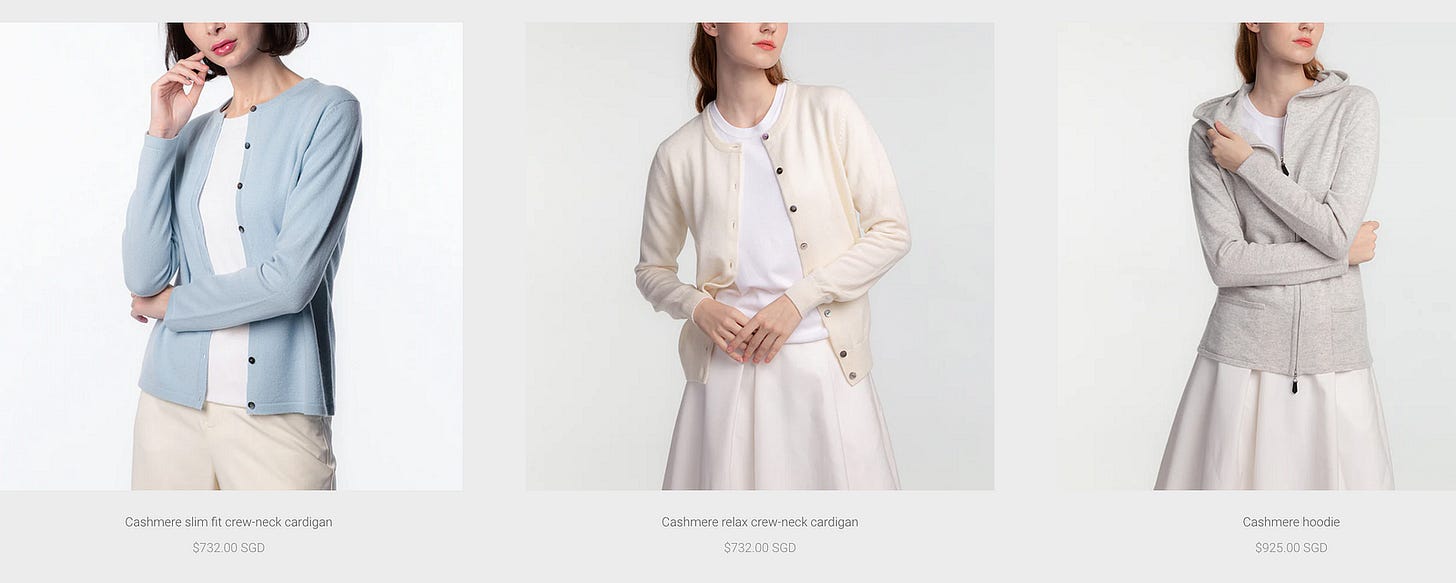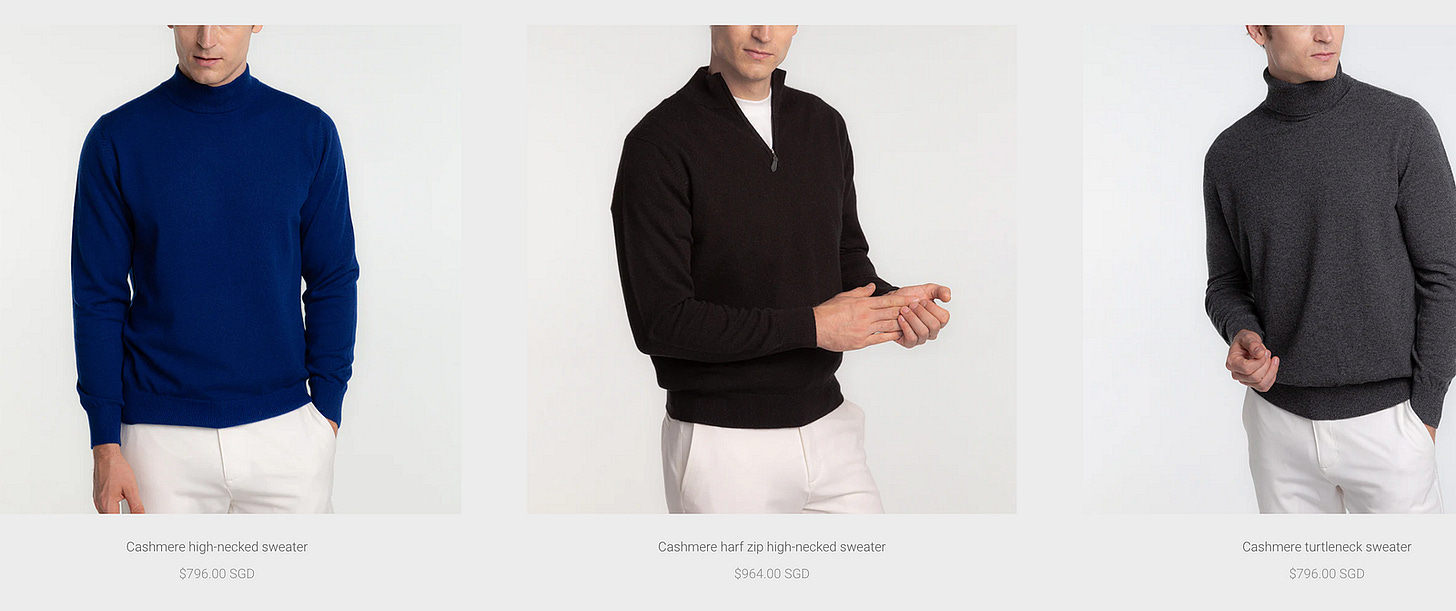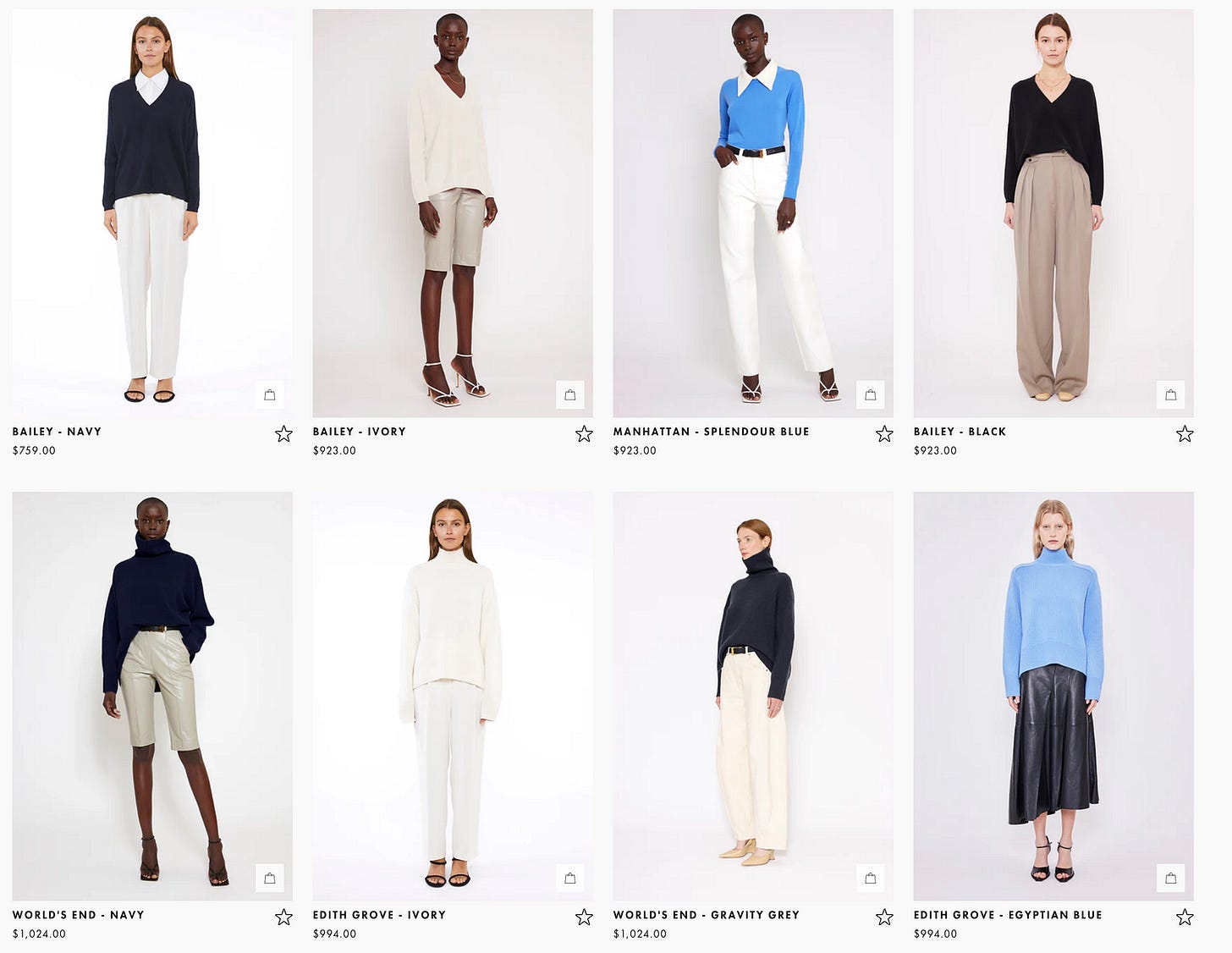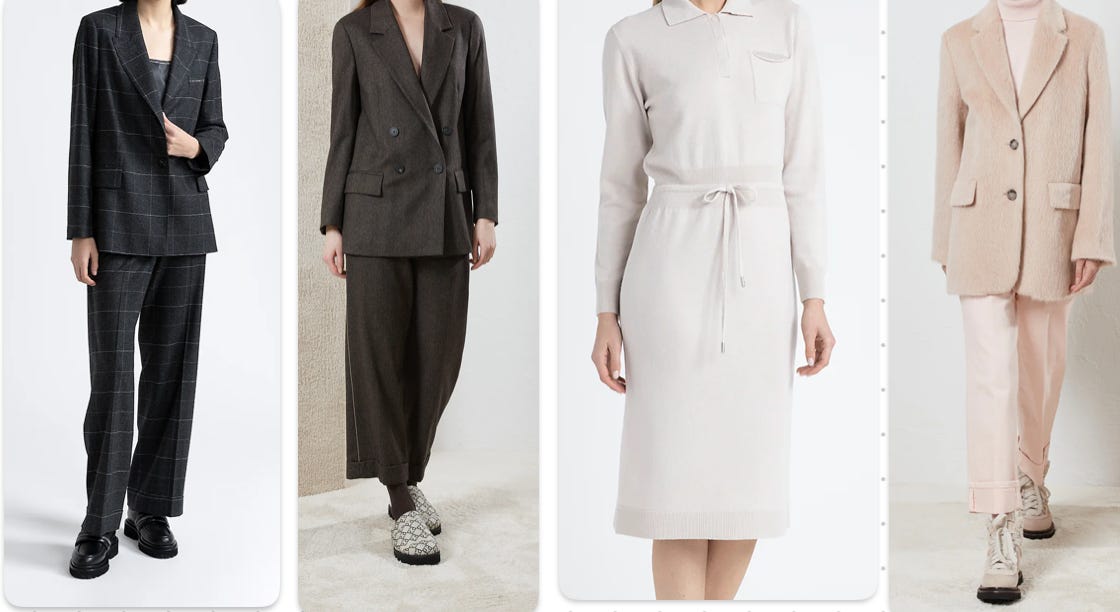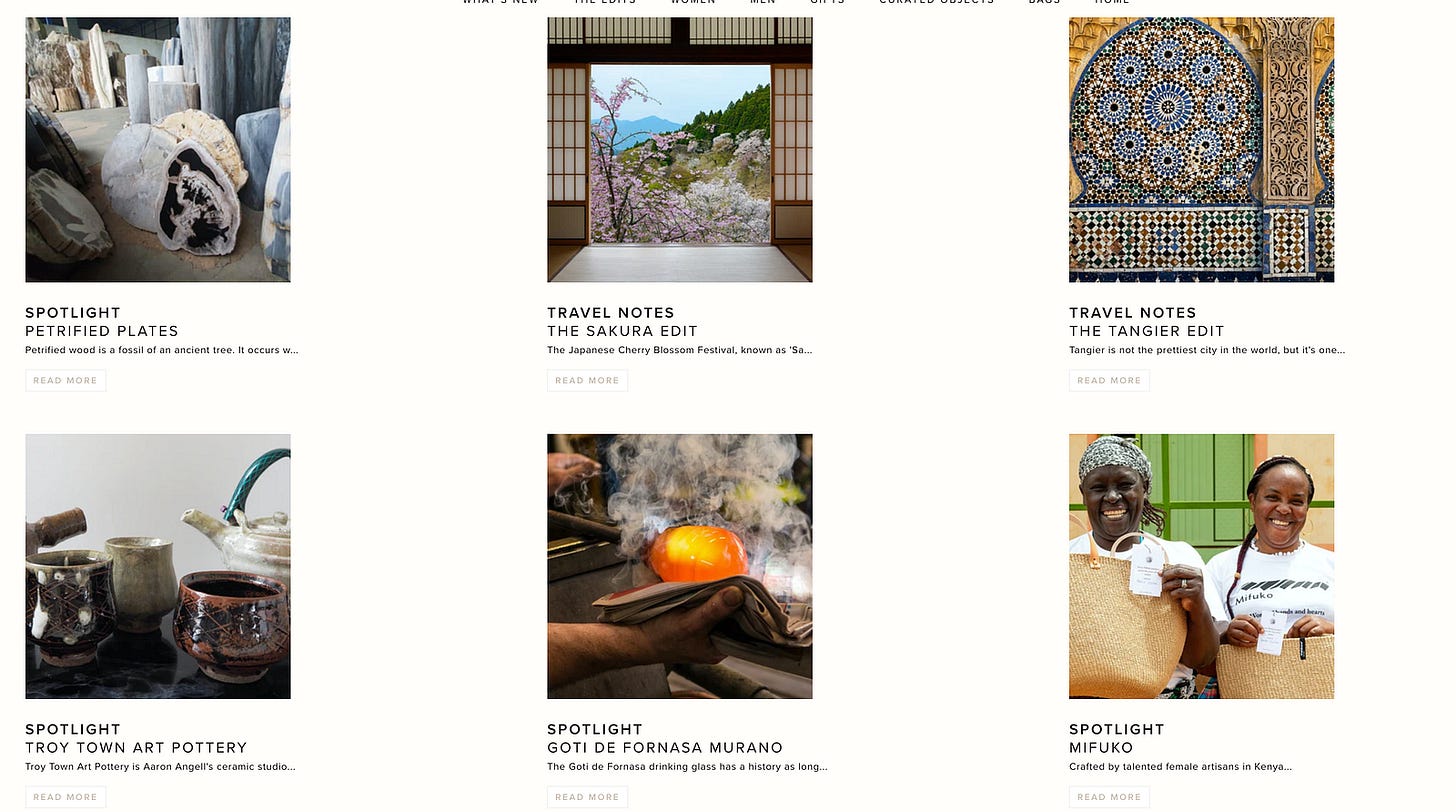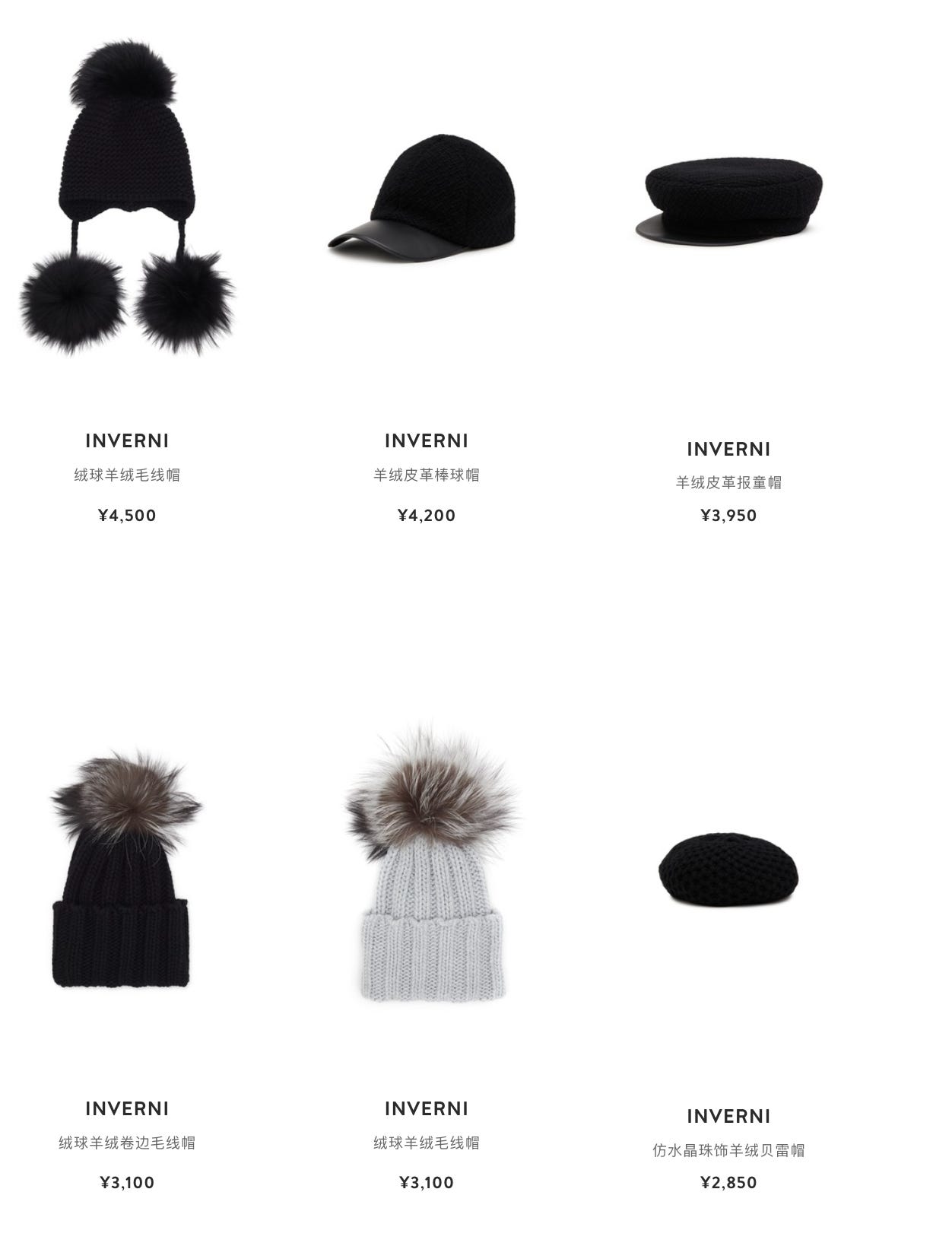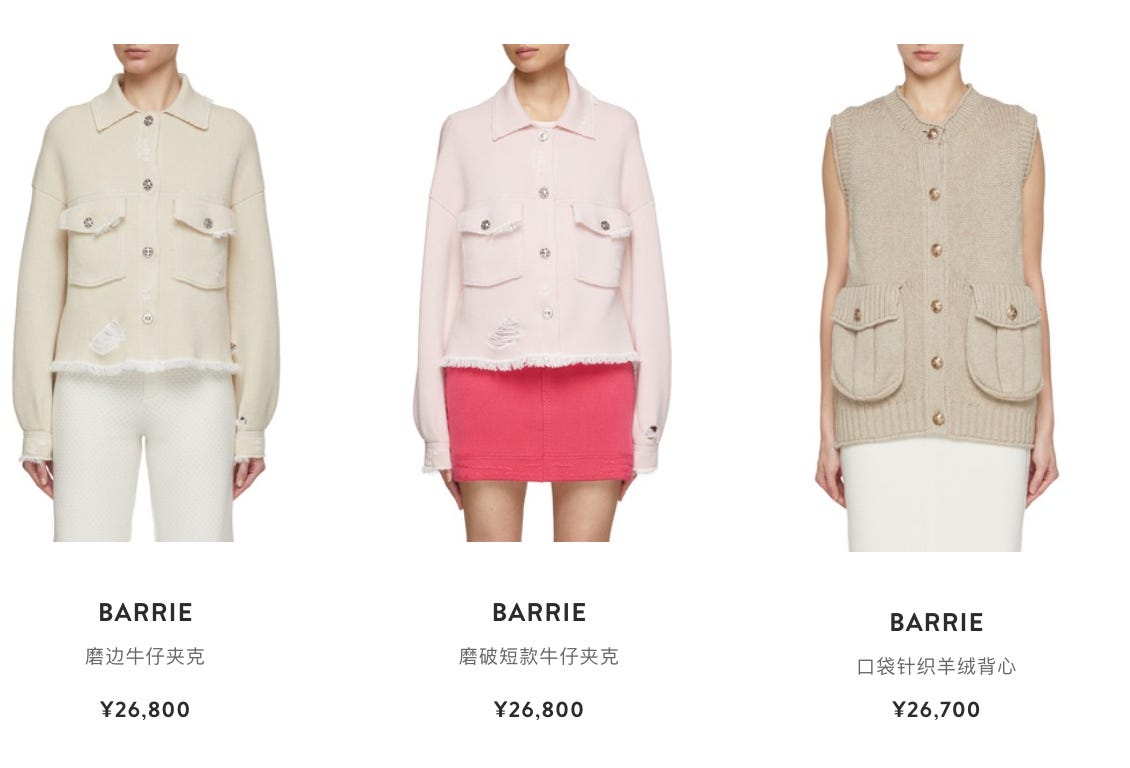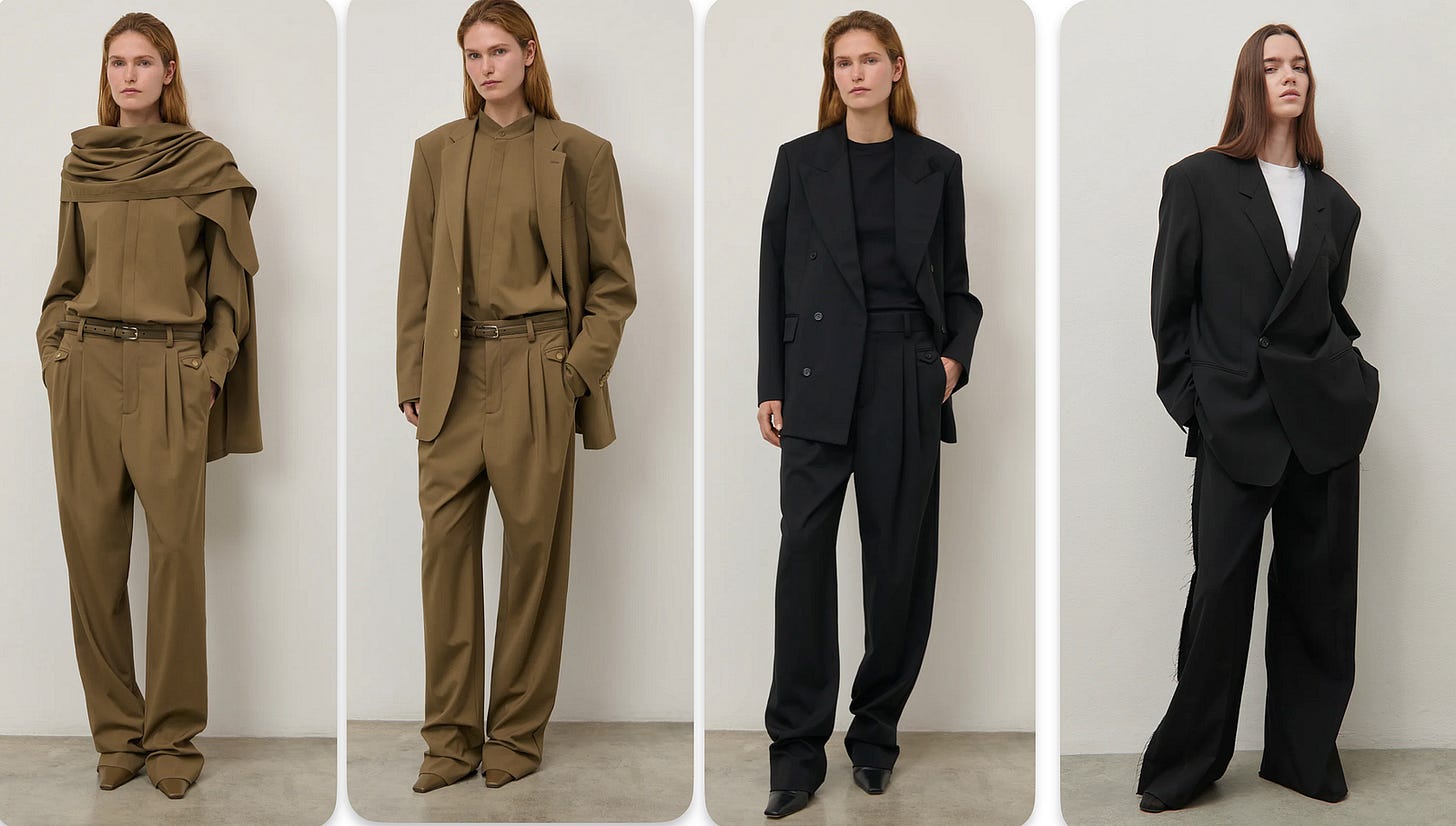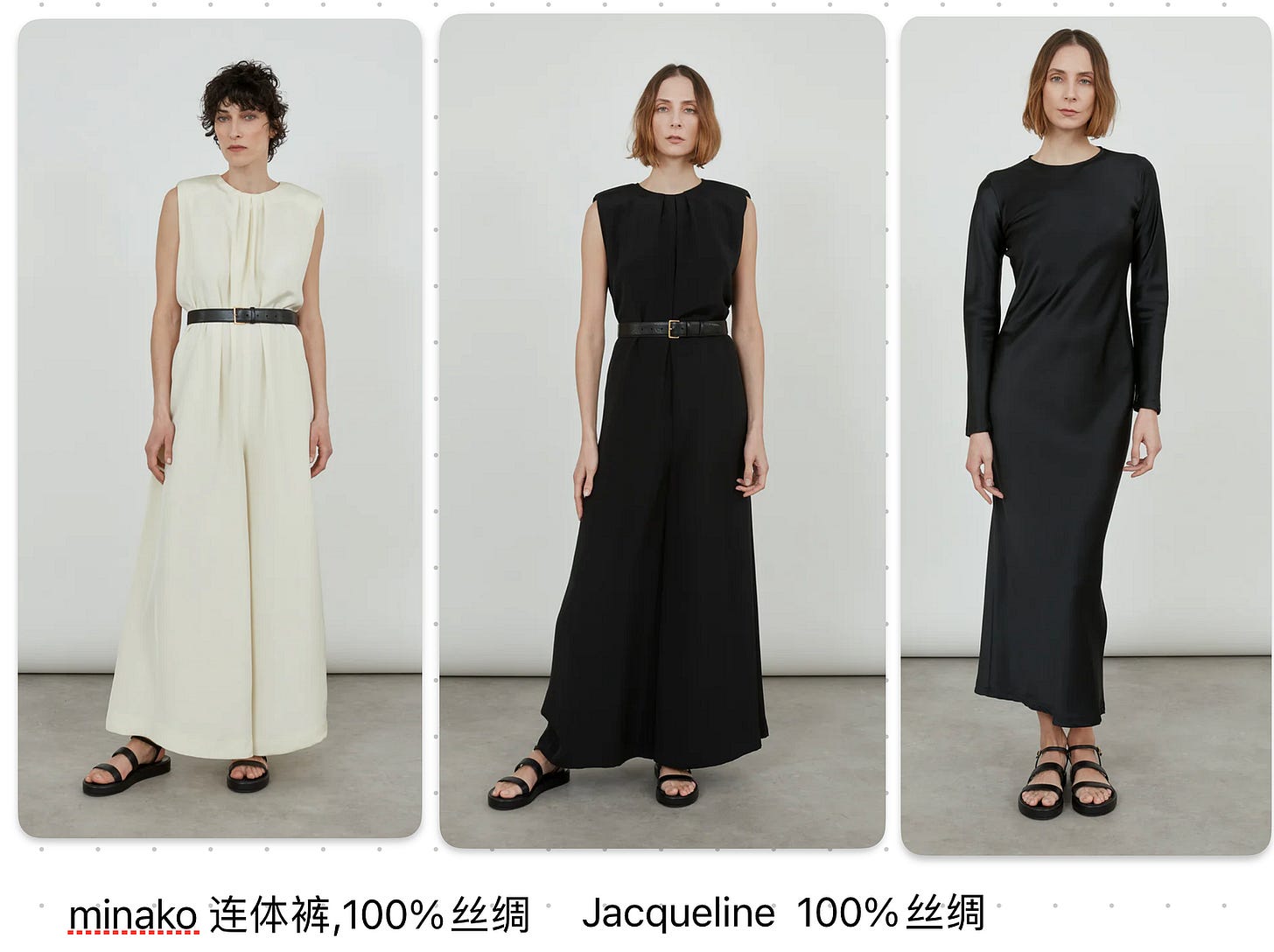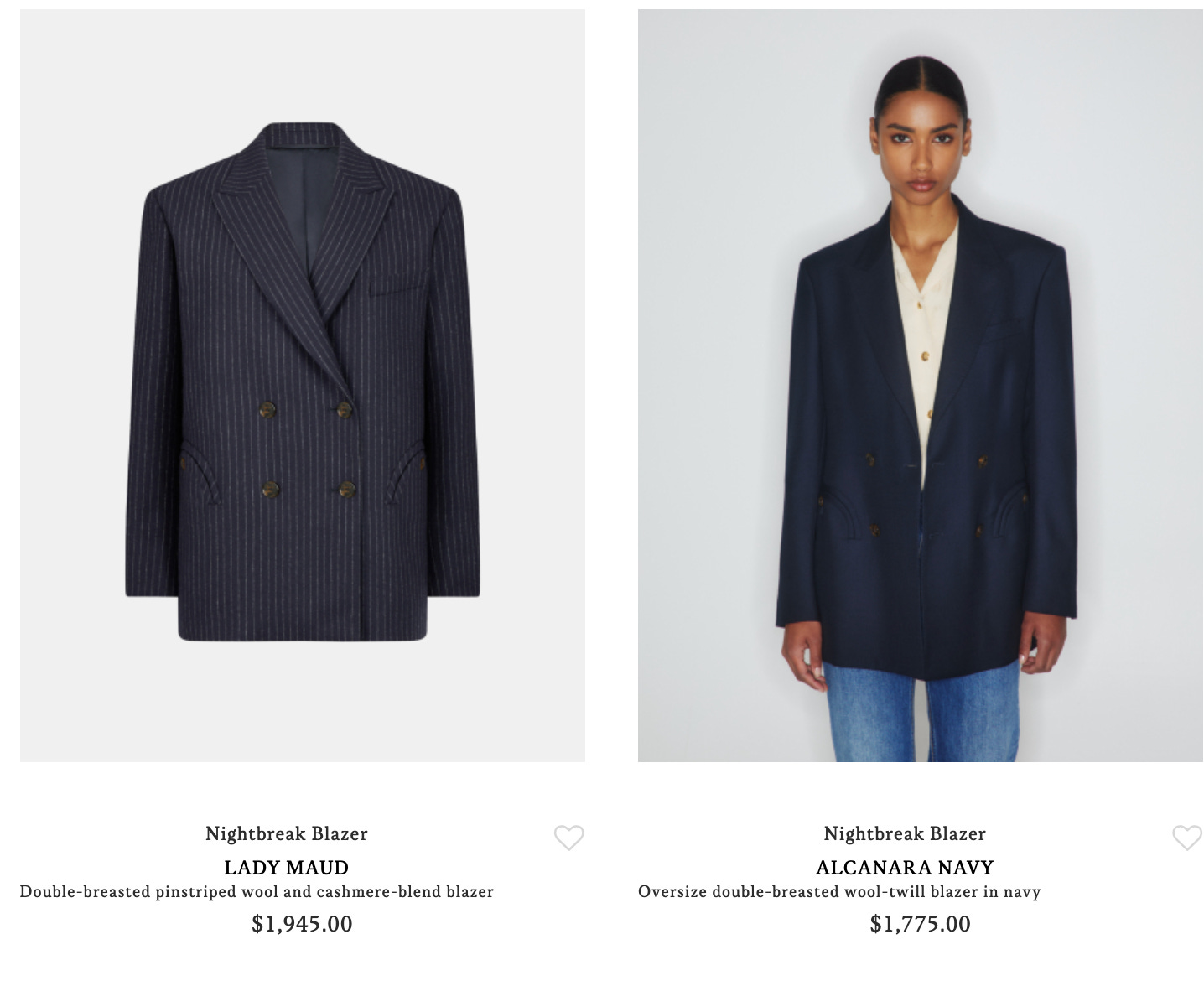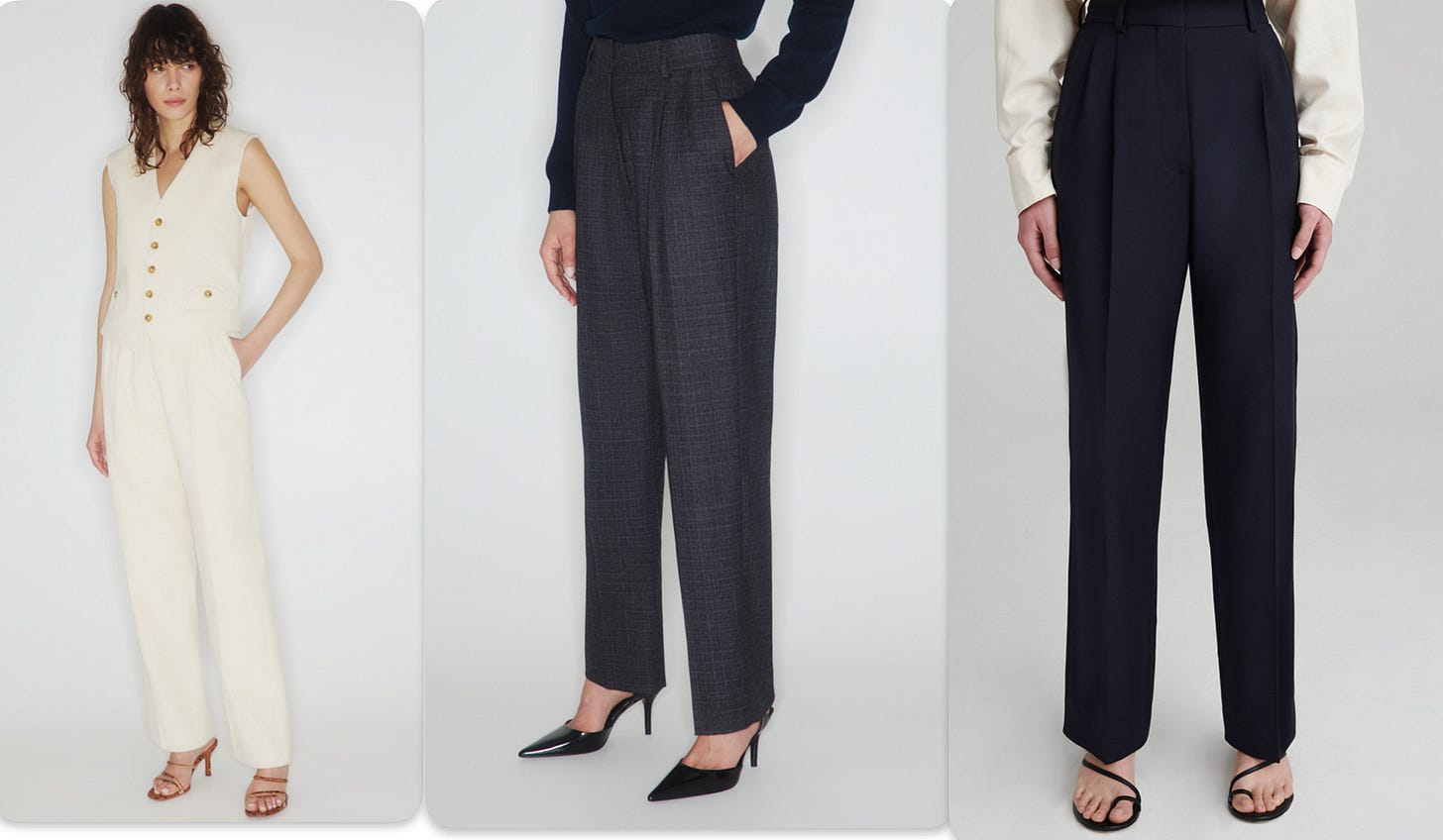Exploring Over 300 Brands to Curate the 30 Best Niche Cashmere and Quiet Luxury Brands

In Beijing, if you’re looking to buy brands that exude Quiet Luxuryyour options are limited to SKP and Lane Crawford, unlike Shanghai where many brands have their own stores. With over 300 brands at Lane Crawford, it’s easy to feel overwhelmed — so which ones are truly worth visiting? Specifically, brands with clean designs (no obvious logos), quality fabrics (cashmere, mulberry silk, or at least wool), and a fit that caters to petite Asian figures with body-friendly cuts.
When assessing a brand, the main fabric can tell you a lot about its overall quality. High-cost materials like cashmere, baby alpaca, and mulberry silk suggest a commitment to quality basics rather than flashy, trendy styles. These basics are often simpler, more versatile, and forgiving on various body types, yet they require excellent tailoring and fit. That’s why my first step when shopping is always to check the care label.
The brands listed below all feature items made from materials like merino wool, cashmere, or mulberry silk, rather than polyester, nylon, or regular cotton. After personally exploring SKP and Lane Crawford in Beijing, and conducting some research, I’ve curated a list of 30 brands that stand out (feel free to recommend more!).
Some brands from my Quiet Luxury articles are summarized in Section 03. Detailed brand stories are skipped here, as I’ve previously covered them. For completeness, brands that didn’t make the cut are listed in Section 04, including Japanese, Korean brands, yoga and loungewear, denim, shoes, and various streetwear brands, each summarized in one sentence.
This is one of the longest, most detailed articles I’ve written in a while — it’s been an exhausting week. Use this as a brand reference guide for when you come across unfamiliar names in the future.
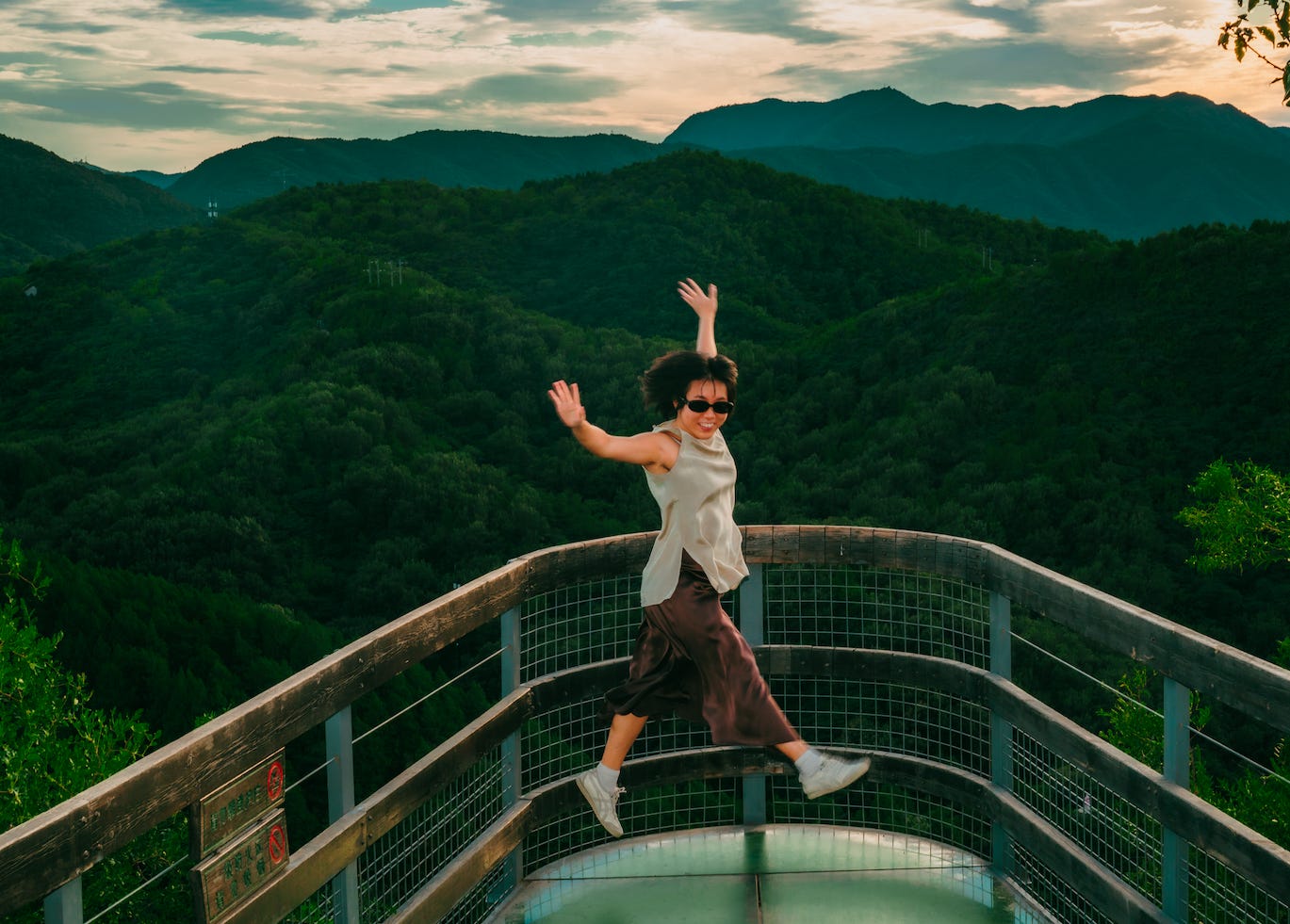
01 Cashmere
This section features brands with strong cashmere DNA; even when not pure cashmere, they use shearling wool or mink, sable, etc. These are fabric-focused brands with solid materials and less brand markup. When you catch them on sale at Lane Crawford, it’s a steal.
SA SU PHI
SA SU PHI is the creative fusion of Sara Ferrero (SA) and Susanna Cucco (SU). They share a vision, taste, and aesthetic, along with a commitment to the golden ratio (PHI) to make women’s clothing more fitted, comfortable, and stylish.
A thin undershirt made of 70% cashmere and 30% silk costs around 5,000 RMB.
The brand’s design and fabric are impressive, and the brand premium isn’t too high — definitely worth noting. SA SU PHI is most famous for its various styles of cashmere sweaters, which differ significantly from the typical fits I see; the cinching at the waist and arm details make the fit a standout feature.
Blazers and coats, which test the brand’s tailoring, are also done well. Like Armarium and la Collection in Section 02, they use origin wool and sometimes add 30% silk.
Wild Cashmere
Founded in Milan in 2022, this new cashmere brand has a limited range, currently only offering tops and a few skirts, all made from silk or cashmere.
Wild Cashmere’s designs are still developing, but their ribbed cashmere sweaters stand out for their unique texture.
Crush Collection
If it weren’t for Lane Crawford, I wouldn’t have discovered this brand, which specializes in knits, particularly in Chanel-esque tweed styles. Popular among the well-off influencers on Xiaohongshu, the brand also offers menswear, including cashmere sweaters.
Founder Vivian Chang shuttles between Gothenburg, New York, Paris, and Shanghai, emphasizing an “international lifestyle” and “global citizen.”
Crush Collection was founded in 2009 with the aim of designing warm yet beautiful cashmere sweaters. Though many tweed items are made from wool and sometimes linen, the brand’s roots are firmly in cashmere. Basic cashmere sweaters range from 3,000 to 4,000 RMB, similar to Erdos and Icicle, making it a relatively affordable brand.
Crush Collection also offers bags, Chanel-style tweed jackets, and pants, but I’d recommend their cashmere sweaters above all, as the brand’s core and the founder’s original intent lie in cashmere.
The men’s cashmere collection is limited to a few items on Crush Collection’s official website, and no menswear was found on Lane Crawford’s site.
I’m not a fan of the Chanel-style tweed jacket fabric, but if you like the design, it does exude luxury. There’s also a Chanel-style brand founded by a Korean in New York called Soonil, where a similar jacket costs 50,000 RMB; it’s regarded as the pinnacle of Chanel style and frequently appears in K-dramas like “Queen of Tears” and “Anna.”
Crush Collection’s pants are mostly wide-leg trousers. Items priced over 4,000 RMB are primarily silk and wool, while those between 2,000 and 4,000 RMB are made from polyester and cotton.
This pricing based on fabric content is also seen in brands like Icicle and Erdos, with similar pricing ranges.
Apart from collaborating with large department stores like SKP and Lane Crawford, the brand also works with select stores in first- and second-tier cities in China, making offline purchases fairly convenient.
Recently, Crush Collection opened a standalone store at Jiuguang Department Store in Shanghai. Speaking of Jiuguang, I miss the sales on the 7th floor, and I really hope Beijing gets a similar outlet (especially for cleaning supplies, household goods, and home decor).
Beijing is already feeling autumn; wearing short-sleeved cashmere doesn’t feel hot but rather cozy. Over the past two weeks, intermittent autumn rains have gradually brought temperatures down. Imagine spending a rainy weekend at home, wrapped in a soft cashmere sweater or short-sleeve, with a cashmere blanket over your knees, the gentle patter of rain as white noise, and a cup of homemade milk tea — sounds like bliss.
Maison Alexandra Golovanoff
Founded by Instagram fashion influencer Alexandra Golovanoff, this brand started with cashmere sweaters in 2016, also using cotton and wool fabrics. The brand collaborates with Italian factories for yarn and produces in Mauritius, specializing in cashmere sweaters with 8 styles and 14 colors.
Maison Alexandra Golovanoff has since expanded to include capes, jeans, shirts, swimwear, and perfume.
La Kasha
A French knitwear brand established in 1918, La Kasha offers items almost exclusively in linen, silk, organic wool, and cashmere, with no synthetic fabrics. The least expensive material is 100% linen. You can get a cashmere T-shirt for around 4,000 RMB, and summer items include silk dresses and shorts, but styles are more suitable for the 40+ crowd.
Le Kasha was previously a fabric supplier for luxury ready-to-wear brands like Coco Chanel and Lanvin.
The brand is relatively unknown in China, with only two influencer posts on Xiaohongshu.
Lane Crawford has a good selection of this brand; keep an eye on it. The designs are practical for daily wear, and the new generation of the family is gradually making the designs more youthful.
The cashmere vest on the far right is filled with polyester fiber. I tried a cotton-filled version last year but eventually passed, considering that Beijing winters also require warm sleeves and that it’s difficult to clean. Still, it’s unique — BC winters have cashmere down coats.
Lisa Yang
Lisa Yang, a Beijing-born creative director, founded her namesake cashmere brand in 2014. The brand offers both menswear and womenswear, with all items made from 100% cashmere. The design hub is in Stockholm, Sweden, and production is based in Inner Mongolia.
The brand’s design merges Scandinavian minimalism with Chinese elegance, and its logo is the Chinese character “柔” (soft).
The most iconic womenswear pieces are the mid-length cashmere coats, cashmere vests, and cashmere wide-leg pants.
Men’s items include sweaters, cashmere T-shirts, cashmere pants, and cardigans with zippers or buttons, all with impressive quality.
The production process is GOTS certified (Global Organic Textile Standard). Besides Le Kasha, Lisa Yang is another European brand worth watching for discounts.
Ruohan
Founded in New York in 2020 by designer Ruohan, this eponymous brand also has a studio in Shanghai. The design leans heavily towards The Row’s aesthetic, and summer dresses bear hints of Cortana.
Designs are simple, and fabrics are often silk and cashmere rather than synthetic fibers commonly used by other independent Chinese designers. Highly praised in boutique stores, it’s worth picking up a piece during mid-year sales at these stores.
Cashmere and silk outerwear can be had for 4,000+ RMB.
UTO
Established in 1992, UTO is Japan’s top bespoke cashmere knitwear brand, offering customization in color, size, and basic styles for both men and women, including cashmere scarves. It’s considered a niche Japanese cashmere brand.
A light cashmere cardigan costs between 3,000 and 4,000 RMB.
The main offerings are tops, with no trousers in sight; the styles are all basic.
Chinti & Parker
Chinti & Parker is a London-based knitwear brand known for its vibrant, colorful knitwear, but most items are basics, including their cashmere range.
A lightweight cashmere cardigan starts at around 2,000 RMB, while heavier ones cost between 3,000 and 4,000 RMB. Among the brands listed in Section 01, this is one of the most affordable. Most of the cashmere range includes some wool, but according to Xiaohongshu users, even the wool-blended cashmere sweaters are quite soft, befitting a British knitting powerhouse.
Lane Crawford hasn’t recently stocked this brand, so all images are from the official website. For those in the UK, keep an eye out for discounts, which often go up to 40–50%.
Arch4
Founded in London in 2017, this cashmere brand’s quality is comparable to Erdos of a few years ago, exceptionally soft. Lane Crawford carries a good selection, but only for women, though the brand does offer men’s cashmere, unlike Crush Collection.
Arch4’s cashmere sweaters are about 3,000 RMB more expensive than Crush Collection, around 7,000 RMB. The fit has a bit of a slouchy vibe, with loose, basic cuts for both men and women.
Like Lisa Yang, the production process is GOTS certified, and the cashmere products are traceable.
Jovens
A cashmere brand founded in Canada with roots in Hong Kong, Jovens also produces Fendi’s cashmere scarves. Apart from cashmere scarves and throws, they offer ready-to-wear at a great value; the cashmere doesn’t pill easily. Xiaohongshu users compared the quality to LP and BC, but at a more reasonable price.
The brand’s website states that the cashmere used is 14–16 microns in fineness and 28–32 microns in length.
Jovens also offers a silk range, though Lane Crawford mainly sells their scarves. Other purchase channels include Club Monaco — I once spotted other brands while shopping at Club Monaco in Financial Street.
Several factories in Hong Kong have started to serve as OEMs for big brands like LP, which are then taken over by the second generation or U.S.-educated children who try to run their own brands.
Prices were not directly listed, but they’re estimated to be similar to Crush Collection and Chinti & Parker.
Peserico
Founded in 1962 in Cornedo Vicentino, Italy, Peserico insists on Made in Italy. Cornedo Vicentino itself has a strong wool industry.
The brand offers menswear and womenswear, specializing in knits, mostly coats and jackets made from blended wool and alpaca, rarely using 100% premium materials, which is why I don’t particularly favor this brand.
Peserico’s style resembles that of Brunello Cucinelli.
However, the overall design quality is average, so my enthusiasm is tempered; it’s worth checking out in person if you come across it offline.
Lauren Manoogian also mainly uses a blend of wool and alpaca for scarves, capes, and coats, but don’t expect too much from alpaca; Suri alpaca is the only type finer than cashmere, while Huacaya alpaca isn’t even as fine as camel hair. For more comparisons, check out Top 6 Favorite Cashmere Brands.
A dedicated post on Lauren Manoogian is planned, highlighting this first cashmere and alpaca brand from Peru. Currently, it’s available in boutique stores but not in larger department stores like Lane Crawford.
Jane Carr
Jane Carr is a niche brand specializing in scarves and shawls made from materials like silk and cashmere, which are very skin-friendly and comfortable. The brand excels in color coordination, drawing inspiration from travel, global culture, and includes content on porcelain, fabric production, travel, and culture — truly an artistic brand.
Founded in London in 2005 by Jane Carr, the brand offers scarves, accessories, and since 2023, lifestyle items like bags, plates, cups, etc., under the “Curated Objects” section on the website.
Jane Carr only stocks things she loves from around the world: “I only stock the things I love.”
Jane Carr graduated from Central Saint Martins, worked as a design consultant for Jil Sander and Balenciaga, and headed the print department at Versace before returning to London in 2005 to start her own brand, focusing on prints.
Silk scarves are produced in Como, Italy, and cashmere comes from Nepal.
Lane Crawford also carries Jane Carr alongside other niche cashmere scarf brands like Janavi from India.
Inverni
Since 1892, the Inverni family in Italy has been dedicated to producing luxury cashmere hats and felt hats. All headwear is crafted in the Tuscany region, reflecting Italy’s unique regional charm.
This brand opened my eyes; berets and baseball caps made from cashmere are not something you see every day. I’ve seen hat brands like Janessa Leone, Eugenia Kim, and Maison Michel, but they focus on straw or wool felt hats.
Longing for Sleep
This brand uses fabric from old Soviet wool blankets. A designer in Tallinn, Estonia, thought of making coats from blanket-like fabrics to wrap up warmly during the polar nights of winter.
All coats and blankets are handmade, dyed, and labeled with the artisan’s name in Tallinn. Many items also feature jewel chain embellishments.
The brand operates on a made-to-order basis with no inventory, requiring about a week for an artisan to complete a coat.
Gushlow & Cole
This brand is almost unsearchable on Xiaohongshu due to the founder Katrina Cole’s less extensive fashion connections.
The founder’s father owned a leather and wool factory producing shearling jackets for Cole of Kent. Before founding the brand, she apprenticed at her father’s factory, learning the trade.
Shearling refers to a lambskin leather material typically made from young lambs, with the fleece on the outside and soft wool on the inside, known for being warm, breathable, and comfortable.
In 2003, as British manufacturing declined, her father’s factory closed, but by then, Gushlow & Cole had already been established and received orders from Tokyo, Paris, and New York, leading to a factory restart. Today, the brand is still designed and manufactured in the UK.
This reminds me of the British series “All Creatures Great and Small,” set in Yorkshire, a region with beautiful, soothing landscapes and various cattle and sheep farms. I’ve enjoyed every season and always loved British country manors like Downton Abbey, as well as Ireland, though it’s a bit remote.
Their classic pieces are shearling coats and jackets, priced around 20,000 RMB. Compared to the brands in Section 02, which often have higher premiums and more basic materials, I prefer niche brands like this, quietly making quality garments from top-notch materials — you can sense the founder’s sincerity in their brand story.
Many shearling jackets are reversible. Besides solid materials, the fits are well-designed without excessive brand markup or marketing.
Apart from jackets and outerwear, they only make vests, with many items still made from merino wool.
Gushlow & Cole also offers gloves, hats, and scarves, all made from shearling. They specialize in handcrafted shearling products.
The wool comes from European countries like Spain and Portugal.
They also offer shearling hot water bottles and slippers, tailored to British local lifestyles.
Lane Crawford carries this brand, but currently, there are no items available. Perhaps it doesn’t sell well in mainland China; I rarely see people wearing shearling jackets here — it’s usually cashmere coats, fur, or down jackets.
Yves Salomon
Founded in Paris in 1920 by Gregory Salomon, a fur dealer from Siberia, Yves Salomon combines traditional craftsmanship with modern technology to create luxurious fur collections.
Lane Crawford’s most expensive item currently is a mink fur piece priced at 70,000 RMB.
Items priced between 20,000 and 30,000 RMB are shearling coats or wool coats, and the sub-line Yves Salomon Army also offers down jackets.
Fabio Gavazzi
Following Yves Salomon, Fabio Gavazzi is an Italian high-end fur brand established in the early 20th century, with production and manufacturing based in Italy.
If you want to ensure the authenticity of fur, consider this brand. They offer a lot of mink, sable, and chinchilla fur, popular among affluent circles in the U.S.
They frequently collaborate with Lora Piana, adding mink or sable fur to cashmere coats. Most menswear items are these collaborations, as men generally don’t buy fur coats.
During sales at Lane Crawford, items from this brand can go down to 40% off. A 20,000 RMB piece could drop to 8,000 RMB, saving you 10,000 RMB.
Fabiana Filippi
Fabiana Filippi was founded in 1985 in Umbria, Italy, focusing on high-end cashmere and textiles, with a strong emphasis on design and styling.
It’s often compared to BC, but I think it resembles The Row more; the range is comprehensive, and prices are similar, though Fabiana Filippi offers more high-end fabric items like cashmere and silk. It’s relatively unknown in mainland China, with Xiaohongshu posts mostly from store associates or boutique owners. The main market is still in Europe, North America, Japan, Korea, and Taiwan.
Currently, only womenswear is available; no menswear is offered.
A 90% wool mid-length jacket costs 16,000 RMB.
Regular cashmere sweaters are priced around 8,000 RMB, while the cheapest item is a very thin viscose base layer priced at 6,000 RMB. There are also some jeans and cotton T-shirts, but most items over $1,000 USD are at least made of wool.
If your budget is around The Row’s price point, consider checking out Fabiana Filippi and Armarium from Section 02. Especially Fabiana Filippi, as the materials are of better quality.
Kiton
A pinnacle of luxury in the suit industry, Kiton’s other offerings are equally top-notch, with items priced at 15,000+ RMB delivering quality and design that are consistently excellent. Kiton is already well-known, so I won’t go into detail.
A 40,000 RMB item discounted to 50% saves you 20,000 RMB — almost feels like buying a car.
Ermanno Scervino
Ermanno Scervino gained popularity in China, largely thanks to Liu Yifei. It’s considered a haute couture brand, with many heavily crafted lace dresses. Cashmere sweaters start at 10,000+ RMB, and T-shirts are priced at 8,000+ RMB, often incorporating lace elements even in basic pieces.
Lane Crawford mainly sells these everyday basics, while the stunning runway dresses need to be specially ordered.
Though the lace dresses are made of cotton, they are very expensive; even at a 10–20% discount, they still cost over 10,000 RMB. Suitable for celebrities attending evening events, this is more for admiration and inspiration at the moment.
Barrie
Founded in the Scottish Borders in 1903 and acquired by Chanel in 2012, Barrie launched its brand in 2014, specializing in cashmere. Chanel’s cashmere knits are produced by this subsidiary.
It has only gained popularity in recent years, with a lightweight cashmere cardigan priced at 10,000+ RMB — after all, it’s Chanel.
The thicker cashmere jackets below cost around 20,000+ RMB. The prices are high, but the cashmere is indeed excellent; you can see the plushness and the way it drapes downward — top-quality cashmere always has this kind of drape.
Cashmere pants are also 20,000+ RMB.
02 Power Suits
This section gathers brands that, while they don’t have many cashmere pieces and use a lot of wool or even viscose and polyester, they excel in design and tailoring with unique craftsmanship, meriting their own spotlight.
Armarium
For those who love hardcore, strong, minimalist boss-lady styles, Armarium is perfect. Founded by Giorgia Gabriele in Milan in 2022, the brand is designed, produced, and manufactured in Italy. It resembles the style of Proenza Schouler but at The Row’s price range (also somewhat similar in style to The Row).
Founded during the pandemic, coupled with the founder’s own style, the brand’s initial concept was to create fashion items that are not season-dependent. Most pieces are made from origin wool and merino wool.
The brand name, Armarium, means wardrobe in Latin.
Their specialties include Napa leather jackets, coats, and trench coats, as well as a variety of suits, trousers, and dresses made from origin wool and merino wool, with sharp tailoring.
Armarium’s leather coats are a true test of body shape. Both of these pieces are available at Lane Crawford, priced at 20,000+ RMB.
If you like leather, also consider Nour Hammour in Paris, a brand that specializes in leather.
A black pair of trousers comes in over four versions, with four different tops to match. That’s attention to detail.
The dresses below are also noteworthy. People often say Skims’ dresses have great fits, but to me, it’s these cuts that truly have quality — not just the tailoring but also the fabric’s quality.
Lane Crawford carries a wide range of Armarium items, mostly using origin wool and merino wool, resulting in higher prices. A thin knit sweater in origin wool is priced at 5,000 RMB, cashmere versions are around 10,000 RMB (comparable to Loro Piana cashmere sweaters), and outerwear is priced above 10,000 RMB.
Although the prices are high and the brand is not yet very well-known, its future seems promising — the design and aesthetics are solid. The few pieces they’ve released over the past two years feel stable.
La Collection
La Collection is a modern design brand from Antwerp, Belgium. Like Armarium, it mainly uses origin wool (for trousers) and merino wool (for capes and coats). In summer, silk is used (mainly for dresses). Like most Antwerp-based clothing, it focuses on minimalist black and white; almost all items are available in black and white versions.
The most popular item is this 100% origin wool cape, with a truly outstanding fit. It’s also popular on Xiaohongshu, and some stores on Taobao and Xiaohongshu are already replicating it.
These two pairs of trousers also sell well, including the Charlie belt in the first picture.
These two tops are also among the best-sellers. La Collection’s design level is evident from these photos.
Lane Crawford carries a rich selection of this brand, including many tops and dresses.
Setchu
Founded by Satoshi Kuwada in Milan in 2020, “Setchu” comes from the Japanese phrase “WAYO SETCHU” (Japanese and Western eclectic). The designer blends elements from different cultures to create extreme works. The brand emphasizes tailoring, showcasing the unique charm of “neutral, deconstructed, and sharp” designs.
In 2023, Setchu won the LVMH Young Designer Prize. Prices are high; a 100% wool pair of trousers costs over 10,000 RMB.
Setchu’s website has dedicated sections for cashmere and silk, denim, and leather. Since it was founded only a few years ago, the overall range is still limited.
Good fabrics and unique tailoring and design have successfully won me over.
Prune Goldschmidt
A Bordeaux-based French brand, known for its Medici collar frilled cotton shirts and oversized tailored suits, with production based in Poland, Bulgaria, and Romania.
The jeans on the right with the bag in front are also a representative design of Prune Goldschmidt.
Their main blazer styles are the two below, especially the left one with metal buttons, which is already sold out. Blazers are priced at around 1,600 EUR, mainly made from wool, with some viscose and silk.
Blazé Milano
Founded by three Elle fashion editors in Italy, Blazé Milano is a women-only blazer brand, with signature blazers priced between 10,000 and 20,000 RMB. While many fabrics are viscose, they make up for it with excellent tailoring. These clothes often look unremarkable but truly come to life when worn by the right body.
The brand name, Blazé, is a play on the word “blazer.” The brand mainly focuses on blazer-style items, including shorts, jackets, and vests.
Blazers come in three main series:
Everyday Blazer (core series)
Night Breaker Blazer
Heart Smoke Blaze
Their trousers come in two main series:
Fox Pants, available in colors like blue, cream, camel, grey, and black, with a straight fit and pleated waistband.
Banker Pants
Blazé Milano’s blazer-style vests are also quite good.
Their jackets, like their blazers, feature the brand’s signature round pockets, also known as smile pockets.
Lane Crawford carries a substantial selection from this brand. Given that it was founded by fashion editors, it naturally comes with built-in resources.
Calcaterra
Founded by Daniele Calcaterra in 2014, Calcaterra focuses on the interplay of silhouette, fabric, and craftsmanship. It’s a brand that often holds runway shows, though its main materials are cotton and polyester.
Consider it more for design and styling ideas.
Rosetta Getty
A minimalist brand from Los Angeles, Rosetta Getty primarily uses nylon, but the designs are decent. Rosetta Getty herself hails from a family wealthy enough to own private museums, began collecting art as a teenager, and also worked as a model.
Roland Mouret
Roland Mouret’s fabrics aren’t great — a 10,000 RMB dress made of polyester — but the design is on point, which is why celebrities like Kate Middleton frequently wear it.
Roland Mouret is a French designer with a background as a model and stylist. I find that clothing brands founded by models or stylists are less practical and durable, often lacking in fabric quality. Compared to those who only wear an outfit a few times a year or even once, polyester might be enough; they care more about aesthetics. They still fall short compared to fashion bloggers who make clothes, and are no match for designers from textile families.
Designers from textile backgrounds prioritize product quality, paying attention to fabric and craftsmanship. Graduates from Central Saint Martins tend to be trendsetters, valuing concepts, while fashion bloggers excel in aesthetics and fabric quality. This is a pattern I’ve noted after studying over a hundred major brands.
03
Brands like The RowandToteme offer a wide range of items, including bags, shoes, jackets, trench coats, trousers, blazers, and swimsuits, making them the most versatile among these brands.
Lemaire mainly sells bags at Lane Crawford; dry silk shirts are rare. While there are menswear and womenswear items, they are quite ordinary. Based on user reviews, the most worthwhile items from this brand are bags and dry silk garments.
Both Gabriela Hearst andCult Gaiacurrently only have a pair of shoes available.
JOHNSTONS OF ELGIN has its own brand but currently no stock. There’s a flagship store on Tmall, mainly selling scarves.
Brands like JOSEPHand Khaiteoffer a variety of items, including jackets, dresses, and shirts.
Tove and Studio Nicholson also have a variety of items, including tops, dresses, trousers, and blazers.

04 Brands to Pass
I’m indifferent to the brands below, so here are my initial impressions. You can skim these when you encounter them while shopping to save time.
Herno: Italian down jacket brand, decent value, but I don’t like down jackets, so I won’t say much.
Khrisjoy: Canadian streetwear down jackets, turning down jackets into all sorts of patterns, stripes, and logo prints.
Mackage: A Canadian down jacket brand established in 1999, more focused on tailoring and fashion.
Marfa Stance: Canadian patchwork cotton brand, with deconstructionism where pieces are patched together from here and there; nearly all styles are reversible, and sleeves and hoods are detachable.
Shoreditch Ski Club: British ski gear and cotton clothing, heavily influenced by punk design.
Gia Studio: A niche Vietnamese designer brand. Uses regular fabrics to make dresses priced at 7,000 RMB. Reviews suggest it’s similar to Korea’s brands, often copying The Row, Lemaire, Jil Sander, and others. They have solid fashion connections; Lane Crawford stocks many items. At first glance, it does have that vibe.
Maria McManus: A U.S. minimalist brand founded in 2020, priced between 2,000 and 3,000 RMB. The design is average, and the fabrics are very focused on sustainability and water-saving concepts, mainly cotton.
The Frankie Shop: Mostly pushed by bloggers, but the quality isn’t good.
Tibi: A minimalist New York brand. Fabrics are mostly cotton, with meticulous tailoring but average design.
We-ar4: Founded in New York in 2021 by a group of vegans, all fabrics are upcycled, like wool for blazers.
Simkhai and St. John: Both minimalist and not trendy, but their designs are lacking, and the fabrics are poor while still being expensive.
Marella: A MaxMara sub-brand. I’m not fond of anything related to MaxMara; it feels overly commercialized with too many sub-lines and lacks sincerity.
Ming Ma: A Shanghai designer brand by a Central Saint Martins alum, often picked by celebrities, known for dopamine-colorful formal dresses and balloon skirts.

Streetwear
Rick Owens, Dion Lee, JW Anderson, and Peter Do: These four runway streetwear brands are well-known, even as a casual observer.
Helmut Lang: The brand is well-known, but product quality leaves much to be desired. Helmut Lang has changed hands multiple times; vintage Helmut Lang pieces from the 90s when he was still designing are still worth it.
Jacquemus: Mostly driven by marketing; quality is lacking.
CFCL: Founded in 2020 by Yusuke Takahashi, a former designer at Issey Miyake. It’s touted as a budget-friendly Issey Miyake alternative. For those who like the patchwork, ruffles, and pleats of Issey Miyake, this is worth a look. I’m not a fan of Japanese or Korean brands, but Japanese yarn factories are commendable.
Maticevski: A Melbourne brand that also excels in layered pleats. Fans of CFCL and Issey Miyake might like this.
Sacai, Comme des Garçons, Toga, Yohji Yamamoto, and Y’s: I’ve always considered these streetwear brands.
The Attico: A very young Italian brand founded in 2016 by fashion bloggers Giorgia Tordini and Gilda Ambrosio, emphasizing strong and individualistic women, suitable for stage wear, art photography, or Y2K sexy vibes and poster shoots. Due to the founders’ connections, it’s worn by celebrities like Kate Moss, Måneskin, and Dua Lipa.
Feng Chen Wang: A fairly well-known streetwear brand, mainly offering menswear. Wang graduated from the menswear department of the Royal College of Art and is worn by many celebrities and bloggers.
N°21: An Italian streetwear brand.
Sonia Carrasco: A Spanish streetwear brand.
Jacques Wei: A Shanghai streetwear brand founded in 2019, known for distinctive cuts. The founder has good resources and solid marketing, making it one of the higher-tier streetwear brands.
MISBHV: A Polish streetwear brand established in 2014, known for tight, sexy black vests, T-shirts, and dresses, frequently worn by domestic celebrities.
Maison Kitsuné: A more everyday French brand with a wide following, best known for its little fox logo and frequent sales.
Dry Clean Only: A Bangkok-based embroidered sweater and T-shirt streetwear brand.
Joshua’s: An Italian streetwear brand known for its smiley face logo, which appears on sweatshirts, T-shirts, hats, and scarves.
Fear of God: A U.S. brand with a minimalist streetwear aesthetic, focusing on hoodies, often associated with tennis.
Beautiful People: A Japanese designer brand with many menswear items, streetwear leaning. Lane Crawford carries a lot of loose shirts and denim jackets.
SMFK: A streetwear brand popular among younger audiences, with a slight wasteland vibe.

Yoga and Loungewear
I’m not into yoga or Pilates and have little interest in outdoor or functional clothing. I’m the type to hike in cashmere or silk.
Leset: A Los Angeles brand known for basic tank tops, long sleeves, T-shirts, and shorts at a lower price point, comparable to fast fashion brands like Cos. The range is comprehensive, and it’s frequently worn by celebrities in the West, particularly their white tank tops. Core series include Margo and Pointelle, applying similar styles to camisoles, tanks, T-shirts, long sleeves, cardigans, shorts, and trousers.
Hommegirls: A women’s activewear and loungewear brand by Thai-American designer Thakoon Panichgul, with many tanks and shorts in a slightly androgynous style. The brand is expanding to include denim jackets, and the website features bold visual content.
Beyond Yoga: A U.S.-based yoga clothing brand.
Electric & Rose: A Los Angeles brand focusing on yoga wear plus athletic hoodies and shorts.
P.E Nation: An Australian athletic wear brand with shorts, long sleeves, and tank tops.
Joah Brown: A minimal activewear brand with hoodies, jackets, racerback tanks, and body-contouring dresses, often worn by celebrities like Kendall and Hailey.
Splits59: An American brand offering sweatshirts, sweatpants, tanks, shorts, and leggings.
Gauge81: Known for sexy wrap dresses, primarily eveningwear, from Amsterdam, but also offers basic tops and bottoms.
Skims, Éterne, Determ: All focus on tight loungewear, including dresses, tanks, bras, and are popular among influencers. Determ is Japanese, featuring mostly black dresses, with limited SKU ranges overall.
Sporty & Rich: A sportswear brand with some logo prints, leaning toward tennis aesthetics, but essentially just an LA influencer brand.

Denim
Haikure: A Japanese brand specializing in jeans, with offerings for both men and women (many top-tier denim materials are sourced from Japan).
Kuro: A Japanese denim brand founded in 2010, best known for ripped jeans, with all items made in Japan.
Jeanerica: A denim brand founded in 2018 by Swedish fashion veterans Lena Patriksson Keller and Jonas Claeson. They incorporate vintage elements in denim design while using state-of-the-art equipment to produce eco-friendly denim. Their main offerings include men’s and women’s jeans with everyday fits, great inclusivity, as well as denim jackets, shorts, and shirts.
Darkpark: An Italian brand specializing in workwear and jeans, with a streetwear vibe popular among influencer-type models. A basic cotton sweatshirt costs 4,000 RMB, so it’s typically picked by more established influencers.
SLVRLAKE: Best known for straight-leg jeans in a variety of shades, emphasizing quality.
Good American: A denim brand founded by Khloe Kardashian, offering accessible prices. Xiaohongshu users also report good value for money.
Mother: Known for comfortable jeans with multiple series, though the colors can be a bit off. Frequently worn by American influencers, with reasonable prices.
R13: An American brand known for denim jackets, jeans, and leather items, often featuring distressed, faded, and frayed designs. Recently, the grunge wasteland look has been very popular.
Frame: Initially a solid brand for jeans, but has been criticized in recent years.
Rag & Bone: Known for minimalist streetwear, offering jeans, shirts, and gender-neutral jackets. Initially started with menswear.
Shoes
Amiri: A popular street shoe brand among young people.
Article No.: Known for deliberately distressed sneakers.
Ash: Unremarkable everyday shoes.
Sam Edelman and Circus by Sam Edelman: Accessible footwear brands.
Grounds: Bubble shoes in various dopamine colors, created by a Japanese internet company with two designers.
Suicoke: Ugly black sandals that look cheap and uncomfortable.

Korean Brands
Juun.J: A Korean streetwear brand offering both menswear and womenswear with simple black and white cuts and minimal prints and logos. Juun.J is considered a top-tier Korean streetwear brand alongside brands like Well11done.
Wooyoungmi: Founded in France in 2002, this is Korea’s first menswear brand by a female designer. Combining simple cuts like Juun.J and some prints, it’s a unique perspective on menswear from a woman’s viewpoint.
Kimhēkim: A Korean designer based in Paris, who previously worked at Balenciaga, thus leaning more towards streetwear but with more attention to tailoring than typical streetwear brands.
Bonbom: A gender-neutral Korean streetwear brand established in 2020, featuring hoodies and cargo pants primarily in black and grey tones.
Mardi Mercredi: A Korean streetwear brand known for its signature large daisy T-shirt with the “Mardi” print.
Dunst: A slightly more minimalist Korean brand with not-so-expensive prices. It mainly offers blazers, Chanel-style jackets, and jackets, popular among young people. It’s often touted as a Celine alternative, even mimicking Celine’s models’ walking poses and clothing buttons.
Eunoia: Another Korean brand with minimalist designs, mostly offering shirts and skirts. As with most Korean brands, fabric quality is lacking.
Eenk: Similar to Dunst, this brand leans towards Celine’s style, making it a more high-end option within Korean brands.
Gu_de: Another brand inspired by minimalist design.
LE17SEPTEMBRE: A brand that flirts with the Quiet Luxury vibe but fails in fabric quality, like a 10,000 RMB coat made entirely of polyester.
Nothing Written: A popular Korean minimalist brand on Xiaohongshu with a wide following, thanks in part to a few iconic bags. Premium items are wool, suitable for sales.
Recto: Founded in Seoul in 2015 by Ji Yeon Jung. Like Nothing Written, it offers minimalist designs, with better fabric options including linen, silk, and wool. Worth checking out, such as silk shorts and wool jackets. It offers menswear and womenswear.
Tonywack: A minimalist brand with decent cuts. A 100% wool blazer is around 3,000 RMB, though most items still have a streetwear vibe. Offers both menswear and womenswear.
Hyein Seo: A Korean streetwear brand, often worn by female idols for performances, featuring an academic-meets-functional design.
Lucky Marche: A young Korean brand with predominantly white colors and a brighter aesthetic, featuring sailor collars and sweet designs, leaning towards tennis vibes. Its bomber jackets and tennis skirts are popular, often worn by Korean celebrities.
Gospheres: A new high-end Korean golf clothing brand with a youthful, energetic feel.
Southcape: A golf brand priced around 4,000 RMB, considered mid-to-high-end in Korea with a minimalist design, occasionally featuring bright stripes and prints.
Osoi: Most known for the dumpling crescent bag but still leans towards a budget feel.

Epilogue
Researching and familiarizing myself with each of these brands has not only enriched my fashion knowledge but also made my future visits to Lane Crawford more purposeful — I won’t be wandering aimlessly among a sea of options anymore.
I’ve also documented good embroidery, print brands, and shoe brands locally, and might compile them into a summary once I have enough.
I plan to explore New Zealand’s boutique store Muse and LVMH’s Samaritaine in Paris for brand scouting, archiving, and saving ideas for future purchases.
Beyond enhancing my fashion insights, the search also gave me glimpses into the lifestyles of these brand founders and influencers wearing these brands on various platforms, revealing different life backgrounds, personal growth, career trajectories, and countless possibilities at various stages of life.

by: pamperherself

























